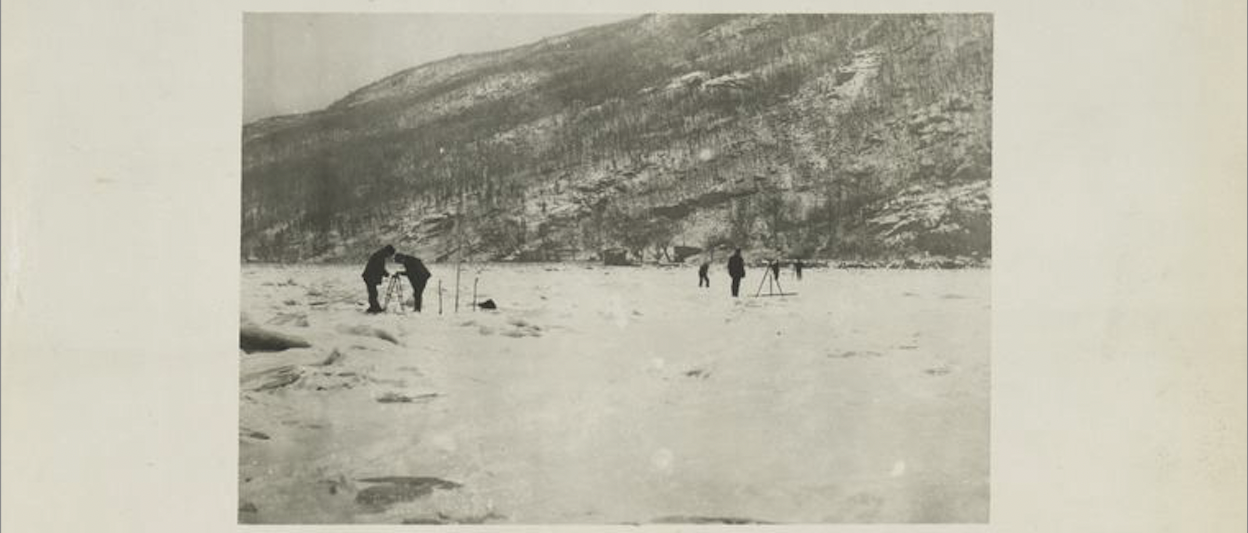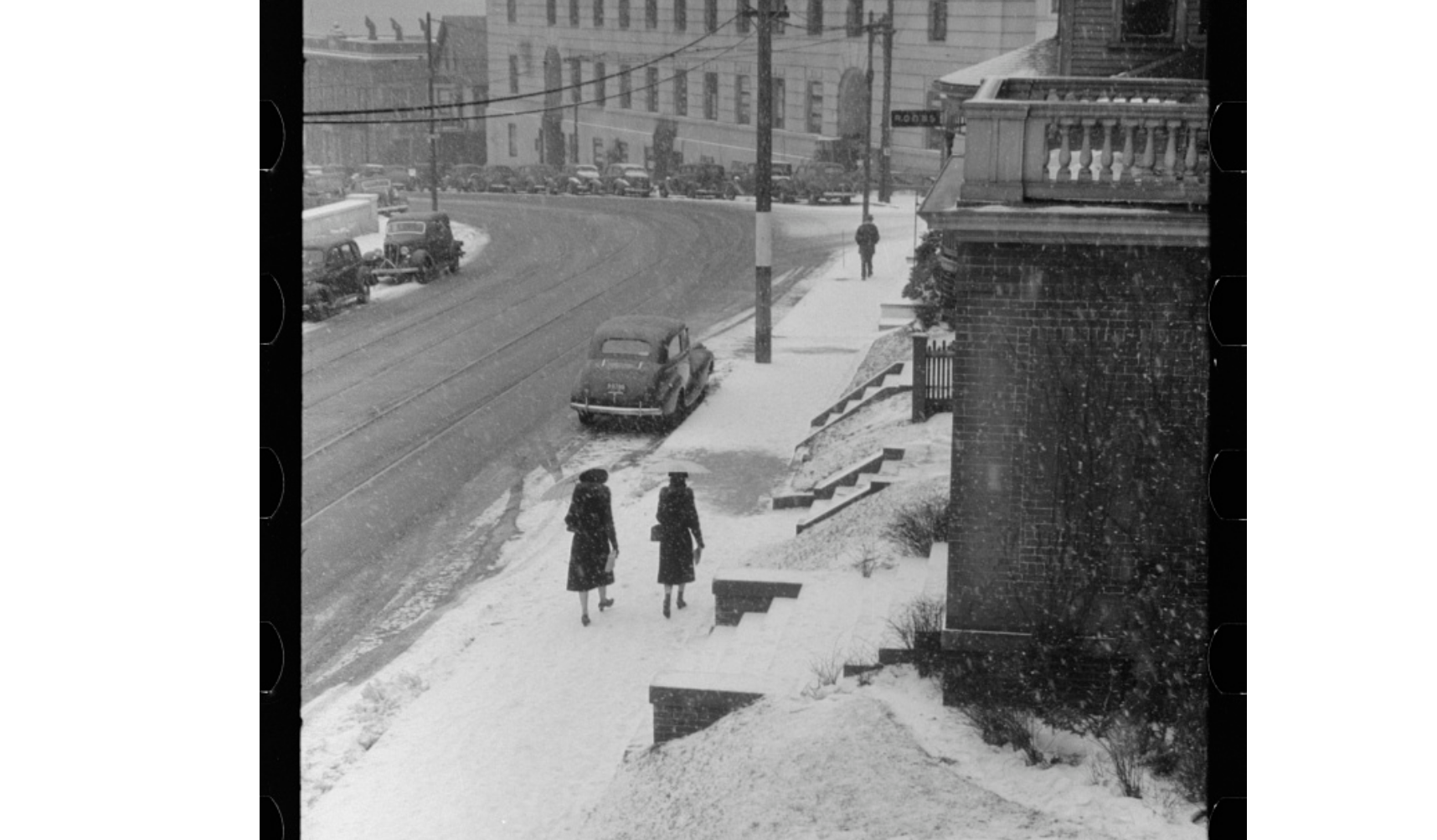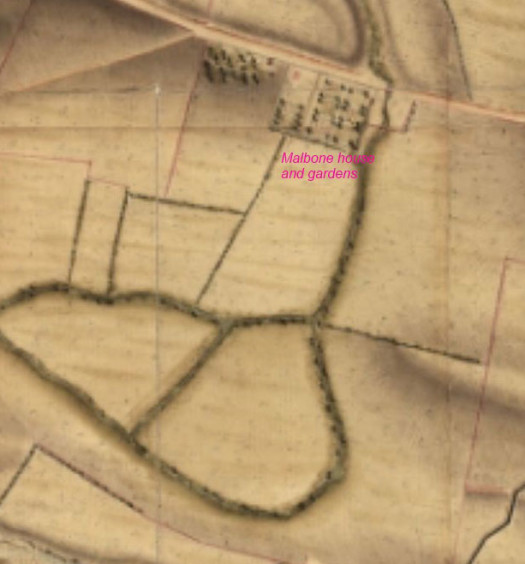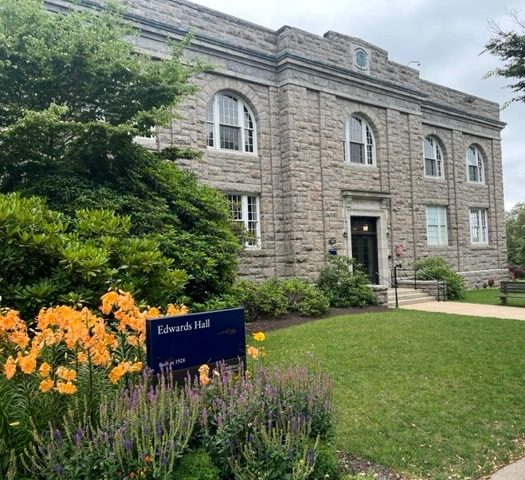[Editor’s Note: The following interesting sketch of one of the most severe winters in the history of Rhode Island, the winter of 1739 to 1740, was written by William Greene of Warwick and was reportedly found in about 1840 among his papers held by a descendant, Richard W. Ward of New York City. Greene was a member of the General Assembly of Rhode Island during the winter of 1740. He was deputy governor from July 1740 to May 1743, and governor at intervals for nearly eleven years from May 1743 until his death in March 1758. He had a house Warwick that still stands today. He was the father of William Greene, Jr., who served as governor of Rhode Island for several terms during the American Revolution.]
This winter by all accounts was the coldest known in New England since the memory of man. It began in the early part of November [of 1739], with extreme cold, and so continued with considerable snow until the first week in December. The weather was then fine and warm for three or four days (The General Assembly sitting at Newport). Soon after this the weather was again so excessively cold that the Bay [Narragansett Bay] was soon frozen over, and people passed and repassed from Providence to Newport on the ice, and from Newport to Bristol. Occasionally, however, the ferry boat passed from Power’s to Fox Hill.
The storms of snow fell one upon another until it was almost knee deep, and it lay until the 11th or 12th of January, when a sudden thaw lay the earth bare in spots for a few days. This was again succeeded by violent cold weather, and in a very few days by snow storms, till the 28th, 29th and 30th of January (the General Assembly then sitting at Warwick by adjournment), when for the greater part of the said three days there was a great driving snow storm which fell full three feet deep in addition to what lay on the ground before. The snow having drifted, the tops of the stone walls and other fences were covered, and so hard was the crust that in many places the cattle frequently passed over them.
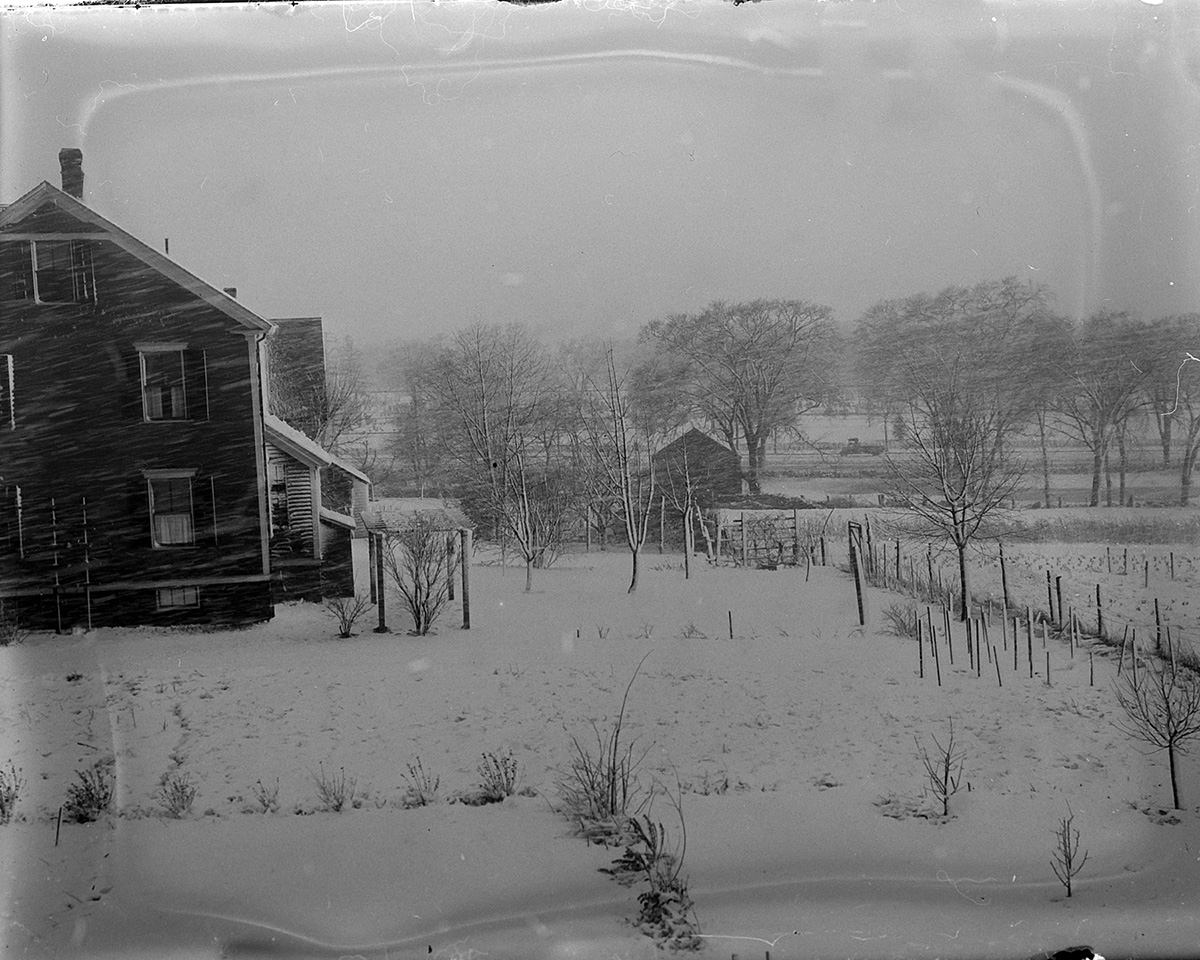
Snowstorm scene in rural Rhode Island, 1915. Due to the slow aperture, note the smoke from the chimney (Providence Public Library Digital Collections)
The prevailing winds during the principal storms of the winter were from the north, northwest and west. Some considerable snow fell with the wind at the southwest, south and southeast.
The ice broke up from Warwick Neck down the bay about the third or fourth of March, but continued fast [frozen] up the river [the Providence River] so that the inhabitants still passed from Warwick to Bristol, as was credibly reported. The snow in the woods where it had fallen level was supposed to be three feet deep on the 10th of March.
During the great snowstorm the last of January, there was a great loss of both cattle and sheep; some were smothered, and great numbers of sheep were driven into the sea by the wind.
The weather continued extremely cold till the 23rd of February, which was a fine, warm day and thawed the ground to that degree that the ground was bare in spots for two or three days. Then came another severe [snow] storm with excessive cold weather, and so continued till the 10th of March, when it became somewhat milder, and the snow began to thaw moderately until the 14th of March, when the wind was southwest and the weather foggy. The snow thawed rapidly, and spots of ground were bare in the plain land, but the greater part of the snow still remained. On the 15th, the weather was moderate and so continued till the 19th, when it again became cold, with some rain. The 22nd was a fine, warm day; the 23rd and 24th considerable snow fell; on the 25th there was snow, and the weather was cold for the season.
The snow gradually disappeared without any rain to make a sudden freshet [gush]. The last of the ice went out of Cowesit (Warwick) Bay the 30th and 31st of March, but some of the snow continued to lie in drifts by the fences till the 15th of April.
The spring came slowly on, and during the greater part of it the weather was cold, and there were severe gales of wind from the west and northwest. My hay was gone on the 15th of April; and out of 235 sheep I lost nearly one-half!
In the midst of the winter it was frozen from the mainland to Block Island, and from thence southward out to sea. It was reputed by the inhabitants that they could see nothing but ice!
There were more than thirty snow storms, besides small flights [snowfalls] not worth mentioning. The spring was so backward [delayed] that in the first week in May the woods at a distance appeared to be dead. The first peach trees were in bloom was on the 7th of May, apple trees on the 13th.
* * * *
Dr. James McSparran, when he was rector of the Narragansett Episcopal Church established at the border of North Kingstown and South Kingstown, in a letter to a friend in Ireland in 1752, wrote, “As from my house I can see the Atlantic Ocean. I have seen it freeze as far as the human eye could reach.” McSparran was likely referring to the winter of 1740.
* * * *
The Rhode Island Republican newspaper edition of February 26, 1840 contained the following: “It is stated in a paragraph recently published in several papers that during the cold winter of 1740, a man drove a horse and sleigh on the ice from Hurl Gate, near New York City, to Cape Cod!”
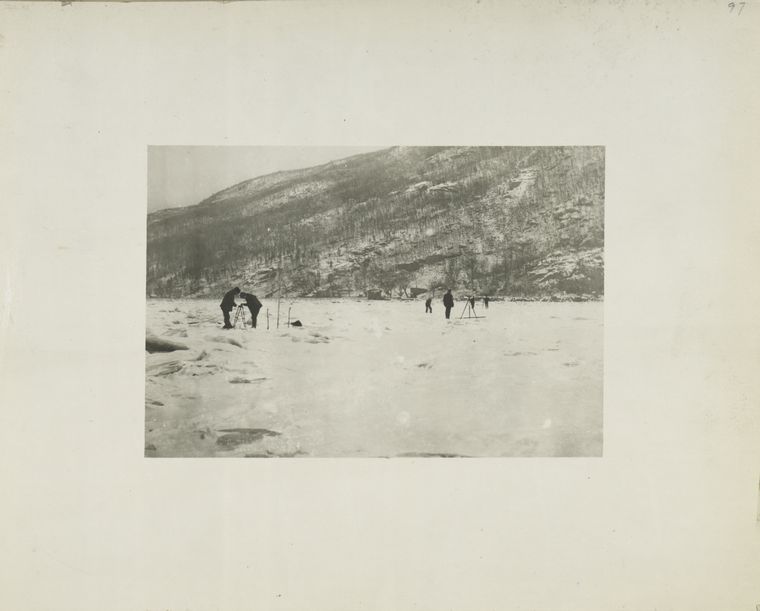
Ice covers all of the Hudson River in upstate New York, January 1907 (New York Public Library Digital Collections)
Sources:
The above recollections from William Greene is from “A Real Cold Winter,” Rhode-Island Republican (Newport), Feb. 26, 1840, p. 2. The recollection is also set forth in Wilkins Updike’s History of the Episcopal Church in Narragansett, Rhode Island (New York, NY: Henry M. Onderdonk, 1847), pp. 202-05, but there were a few typos from the Rhode-Island Republican version. Updike’s book also had the McSparran reference. I do not have the original document penned by William Greene, so I cannot compare that to the above.

